Small Craft for Lighthouse and Buoy-Tending Work;
A Lesser-Known Part of U.S. Lighthouse Service History
by Timothy Dring; CDR, USNR-Retired
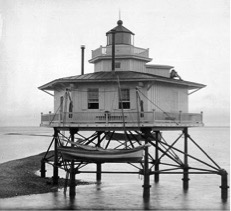
While there has been a lot of very fruitful historical research on the history of the lighthouses and personnel that have served the United States, much less is known about one aspect of U.S. Lighthouse Service history; that of their use of small craft for service at lighthouses and for buoy tending in protected waters. I hope to rectify this shortcoming in the research I am now engaged in, having already done this for the small craft used by the former U.S. Life-Saving Service and early Coast Guard. To achieve success in this effort, however, I need whatever assistance is available from the members of the U.S. Lighthouse Society, as the official record of these small craft is very sparse among the documents held by either the National Archives or the U.S. Coast Guard. My objective is to create as complete a descriptive record as possible of all the small craft used by the Lighthouse Service from the 1800s up to and through the period of its amalgamation into the Coast Guard.
In U.S. Lighthouse Service use, these small craft fell into three broad categories: 1) those assigned to individual lighthouses for use by the keeper; 2) those assigned to individual lighthouse tenders or lightships; and 3) those used by either depots or other support facilities for the purposes of tending the smaller buoys and fixed minor lights within a district. Within each of these categories, as you might expect, is the distinction between those boats that were only powered by oars and/or sails, and those that were powered by some type of marine engine.
Lighthouse Station Boats
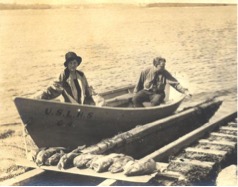
With relatively few exceptions, most major lighthouses/light stations were assigned some type of small craft for use by the keeper, either for resupply trips, or occasionally for local rescue work. Initially, and continuing well into the early 1900s, these boats were of a size and design that allowed easy use by a single person as crew (i.e., the keeper), which meant that they were typically smaller 14- to 16-foot-long rowing skiffs or dories that may also have carried a small sailing rig. The type of small boat assigned to a lighthouse was usually based on the small boat types typically in use in the local area, such that a lighthouse keeper would already have some familiarity with its use. In addition, most boats assigned to lighthouses were sourced from the local commercial boatyards available in each district, rather than being supplied from a central source.
Many of the Chesapeake Bay and North Carolina area screwpile type lighthouses were assigned a larger, combination rowing/sailing boat of a design that was derived from the famous Albemarle Sound shad fishing boat.
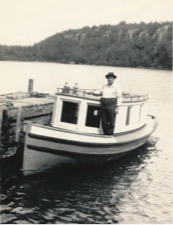
Once reliable lightweight marine type engines were available in the early 1900s, most of the light stations were re-equipped with a motorboat; again of a design that was developed and built locally within each lighthouse district, and one that was usually larger than the older rowing/sailing boats.
Other than a few inspection reports for each lighthouse that included a description of the assigned small boats, very little documentation of these boats exists today. It is hoped that Lighthouse Society members may be able to provide information on the type of boat(s) assigned to their favorite lighthouses, especially if a photograph of the boat is available for sharing.
Lighthouse Tender/Lightship Boats
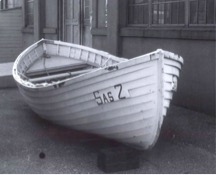
Unlike the smaller sized boats typically assigned to a light station, those assigned to a lighthouse tender or a lightship were larger and more seaworthy. They served two purposes: one being its use as a work boat when transferring personnel and supplies to and from a lighthouse or for servicing a buoy, and the other its possible use as a lifeboat for the tender’s crew. As with the boats assigned to light stations, lighthouse tender/lightship boats started out as solely powered by oars and/or sail, with conversion over to or replacement by motorized models starting in the early 1900’s. Some tenders were also assigned a small steam-powered launch that could be operated independently in sheltered areas for the servicing of buoys and minor lights.

Buoy-Tending Boats
Until the 1920s, the Lighthouse Service did not utilize any small craft that were designed and built specifically for tending the smaller lighted and unlighted buoys that were typically used to mark harbors and inland waterways. Instead, the service preferred to use the smaller harbor lighthouse tenders. This changed by the 1920s, and for the first time the service placed into service small boats (typically less than 60ft. in length) that were designed and built to service small buoys, including an A-frame derrick and well deck for the purposes of lifting buoys on and off the boat for servicing. These were day boats, i.e., without a permanent crew and with no accommodations for overnight operation. These buoy boats were usually assigned to the nearest depot, but were also sometimes assigned to a tender or to a larger light station that also doubled as a local buoy depot. By the World War II years, these boats were expanded in size and capability to provide more seaworthiness and, in some cases, onboard accommodations for the assigned crew.
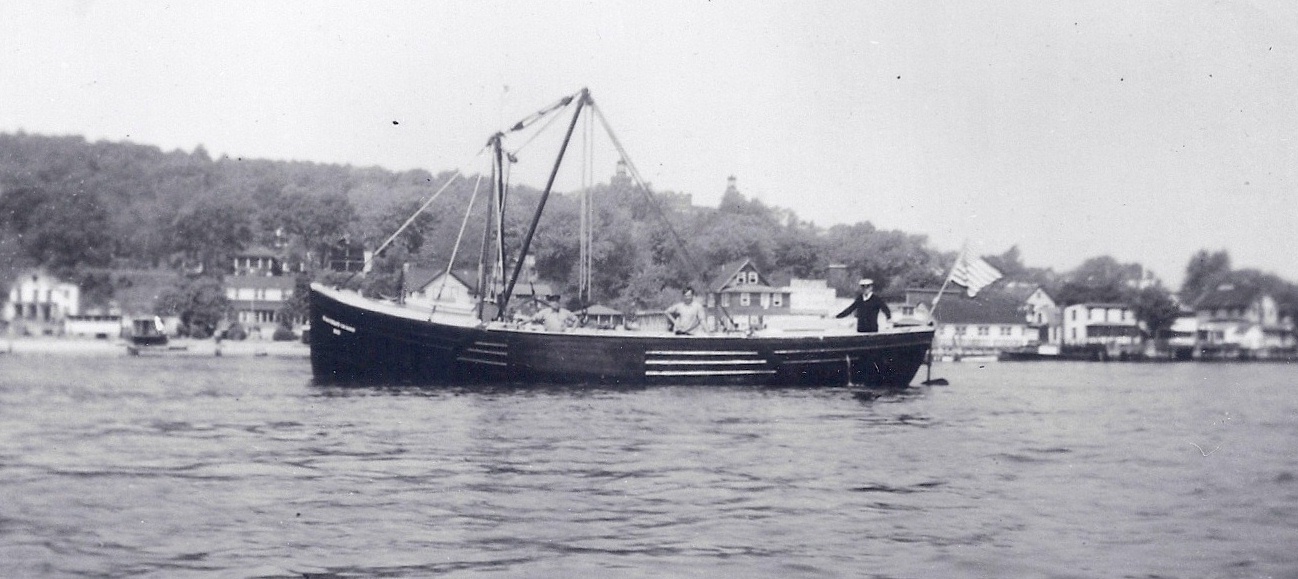
During the Lighthouse Service era, nearly all of the service’s boats were built by private commercial boat builders under contract either to an individual lighthouse district, or to the general depot at Tompkinsville, Staten Island, New York. This changed following the absorption of the Lighthouse Service into the Coast Guard in 1939, after which most of the service’s small craft were built by the Coast Guard’s Curtis Bay Depot in Maryland.
Unfortunately, nearly all of the construction and assignment records for light station, tender, or buoy boats have been lost or destroyed. Trying to reconstruct this part of the history is, therefore, very challenging, and depends very much on what documentary or photographic information is available from sources other than either the National Archives or the Coast Guard. This article serves as an appeal to the reader to assist in this research by sharing whatever you may have related to this topic, such as light station inspection reports, logbook entries, or photographs that may describe or show the small boats that were used at these Lighthouse Service facilities. Your assistance in this endeavor will be greatly appreciated.
Contact Tim via his email <timdringcghist@gmail.com>.
Submitted by Tim Dring, President, U.S. Life-Saving Service Heritage Association and U.S. Lighthouse Society member, May 4, 2017.
* * * *
U.S. Lighthouse Society News is produced by the U.S. Lighthouse Society to support lighthouse preservation, history, education and research. Please consider joining the U.S. Lighthouse Society if you are not already a member. If you have items of interest to the lighthouse community and its supporters, please email them to candace@uslhs.org.

Candace was the US Lighthouse Society historian from 2016 until she passed away in August 2018. For 30 years, her work involved lighthouse history. She worked with the National Park Service and the Council of American Maritime Museums. She was a noted author and was considered the most knowledgable person on lighthouse information at the National Archives. Books by Candace Clifford include: Women who Kept the Lights: a History of Thirty-eight Female Lighthouse Keepers , Mind the Light Katie, and Maine Lighthouses, Documentation of their Past.


lookingfor plans for 36motor lifeboat